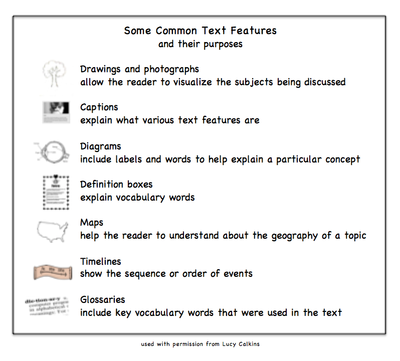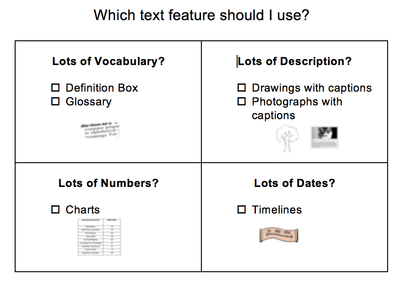To begin with, we considered a series of 7 guiding questions. While these are not the only things to discuss, I have found that these seven questions usually lead us to an effective infusion of specially designed instruction and accommodations.
- Are we clear about our target/objective for this lesson?
- What about this lesson will students find difficult?
- Which specific IEP objectives will we address during this lesson?
- How will the information be presented/adapted? Auditory? Visual? Kinesthetic?
- How does a successful learner accomplish the task? What is their metacognitive process?
- Are there opportunities to provide a micro-lesson on access skills? executive function skills? positive behaviors?
- How can we boost participation?
In the writing lesson, students are directed to view an anchor chart when deciding how to add text features to their writing. As we discussed Question 2 – What might be difficult? - we decided that some students might look at the Calkins chart and simply pick the first one – drawing. This text feature is usually the easiest and most familiar. Other features such as charts and timelines might be more appropriate but might also be considered more difficult.
Next, we discussed Question 5 - What is the metacognitive process a successful writer uses? As an adult, I reflected on my own metacognitive process. I realized that I probably look at my writing and notice some of the characteristics of it. “Hmmm. I have quite a lot of complex vocabulary terms in this piece.” Or “I see a variety of important dates in my writing.” This approach is opposite or backwards to the approach of looking at the text feature types on the anchor chart and choosing one. Instead, it has the writer begin with analyzing their written text. With this in mind, we created an alternative version to the Calkins anchor chart.
Here is the original anchor chart (used with permission) and our second, alternate version.
Email me if you'd like a copy of the alternative chart.


 RSS Feed
RSS Feed